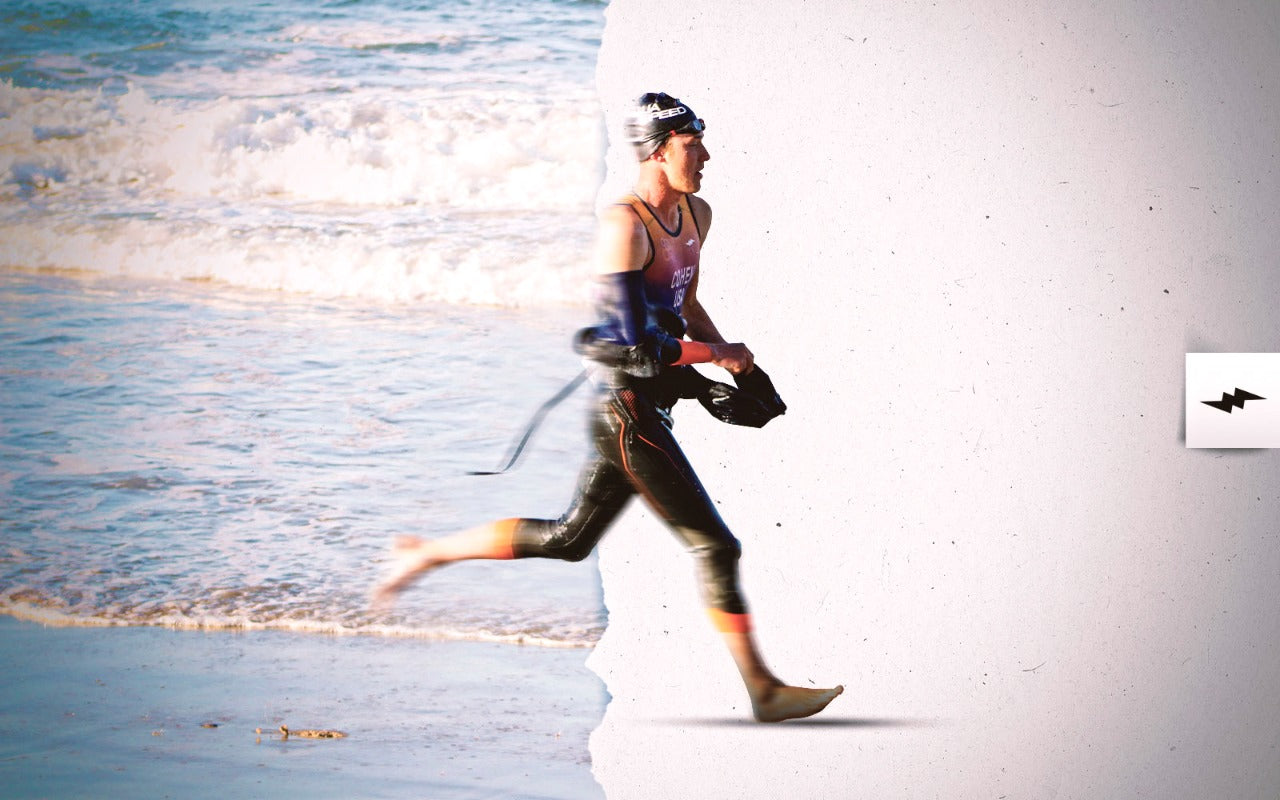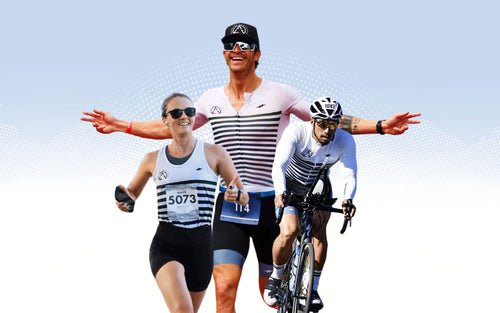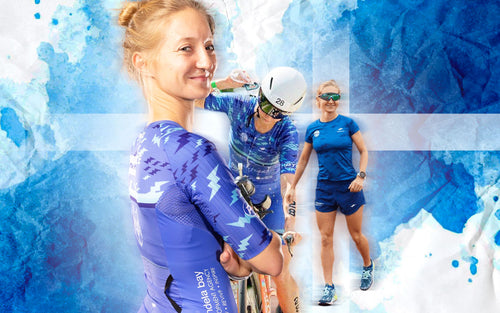Managing Swimmer’s Shoulder

Injuries suck. This we probably all know by now, and if you have not experienced this yet then it is only a matter of time. A study of 174 competitors from the 2011 Norseman showed 56% of participants had experienced injuries due to overuse, so it really is a case of when, rather than if, you will be in the sick bay at some point in your triathlon career. That’s the bad news, the good news is that we can inform ourselves better on how to manage injuries to speed up recovery, and how to limit the effects of overuse in the first place.
Swimmer’s shoulder, along with the associated shoulder impingement, is believed to be the most common cause of shoulder pain, making up 44% to 65% of all shoulder complaints. Swimmer’s shoulder is characterized by shoulder pain, instability, reduced mobility and abnormal muscle weakness. If you experience any of these symptoms then get to a specialist as soon as possible because early identification and treatment is key to a faster recovery. Management of swimmer’s shoulder may include physiotherapy, changes to your swimming stroke and training program, steroid injections or in rare cases surgery.
What Is Swimmer’s Shoulder?

The shoulder is the most complex joint in the body. You have three major bones joining meeting at the shoulder, which requires dozens of different ligaments, tendons and muscles to work in perfect harmony so that you can move your shoulder in pretty much any direction that you want. This level of complexity does naturally mean that the chances of something going wrong are greatly increased. Even more so for swimmers and triathletes who put their shoulder joints through a lot more work than the average person.
If you run your fingers down your trapezium muscle you will find a bony lump just before the shoulder joint begins. This is called the acromion and is the meeting place of the collar bone (clavicle) on the top and the head of the upper arm bone (humerus) below. Between the acromion and the head of the humerus is a fluid sac called a bursa and this is what lubricates the tendons in the shoulder.
Overuse of the shoulder joint can cause the bursa to become inflamed, and is the key cause of swimmer’s shoulder. As the bursa becomes inflamed it causes pain, muscle fatigue, instability in the shoulder joint and reduced shoulder mobility.
What Causes Swimmer’s Shoulder?
The main cause of swimmer’s shoulder is simply overuse, which is probably not what you want to hear as a triathlete because we ‘overuse’ pretty much every muscle and joint in our bodies. That said, we can dial in a little further on the idea of overuse, because if it were that simple then all triathletes would suffer from swimmer’s shoulder. When we talk about overuse, we have to also link that to poor technique and/or poor training decisions.
Poor Technique – Now we understand the basic anatomy of the shoulder, we can appreciate that anything that unnecessarily squeezes the bursa is bad news. One of the worst offenders here is crossing the midline when your fingers enter the water at the beginning of each stroke.
You can try this right now by raising your right hand straight up in the air and imagine you are starting a stroke. Now, before you bring your hand down, deliberately cross over the midline so that your right hand is directly above your left ear. Feel the squeeze on the inside of your right shoulder? That is bad news. If you cross that midline while swimming then you are putting your shoulder under all sorts of unnecessary strain.
Poor Training Decisions – By this we mean either overtraining or overloading while training. Many people think that you cannot overtrain for swimming because it is such a low-impact sport. While that is true, you are asking a lot of your shoulders, so train sensibly and if you start to feel any discomfort then dial it back a notch.
Overloading is another cause. By this we mean placing too much pressure on the shoulder joint during the pull phase of the stroke. This can happen when using hand paddles. Yes, new toys are exciting and you just had your new hand paddles delivered so you slap them on and go as hard as you can in the pool. Paddles are a great addition to your swim bag but a word of warning; ease your way into using them because they can easily overload the shoulder and cause injury if you are not sensible about how you use them.
How To Manage Swimmer’s Shoulder
The first thing to mention with management of swimmer’s shoulder is that early detection is vital. It could mean the difference between a month versus a year of physio to get you back to full training. As such, if you feel any kid of shoulder pain during or after swimming then do yourself a favor and get to a doctor and ask them to check you out.
If you are diagnosed with swimmer’s shoulder then the first thing will be to stop the exercises that are causing the issue. In this case, no more swimming. As with any inflammation, you need to rest the affected area to give time for the healing process to take place.
Regularly icing of the shoulder may help to reduce inflammation and your doctor may also recommend anti-inflammatory drugs. The main thing to remember is that your shoulder pain is your body’s way of telling you that something is wrong, so do not rush back into training or else you are likely to cause even more damage.
Ongoing treatment may include stretches and strengthening exercises, along with correcting the stroke technique that may have led to the issue in the first place.
How To Avoid Swimmer’s Shoulder

Prevention is better than cure, so even if you have not been affected by swimmer’s shoulder let’s try and keep it that way.
First, do some serious analysis of your swimming technique. It is so easy nowadays to ask a friend to film you on a phone from the side and from head on so that you can see yourself swimming. Pay particular attention to your hand entry and make sure you are not crossing the midline. Also look to have a good high elbow and arrow your fingers down into the water, a low elbow with a flat entry will also put unnecessary pressure on the shoulder joint and is an inefficient stroke.
Next, always warm up and stretch before you swim. Start with some gentle shoulder rolls and slowly widen the movement to include circular movement with elbows and finally draw ever-expanding circles with your arms stretched out wide. This will also increase blood flow to the muscles that you will be using and get everything fired up and ready to go.
Lastly, if you feel fatigued then simply don’t swim. Yes, it is a blow to miss a session and it can be a hit to your ego to admit that you are too tired to train, but in reality it is better to have one optional rest day than to have one month off enforced due to injury.
Final Thoughts
Injuries are never fun, but they are part and parcel of the game of being a triathlete. The best you can do is to focus on good technique and listen to your body; if it is telling you to stop then there is normally a good reason for this. With swimmer’s shoulder, the earlier you can get it seen to the faster you can be back in the pool so don’t ignore the warning signs.
Written for Innerforce by Stewart Spiessens
Photos. @nsftriathlon

Injuries suck. This we probably all know by now, and if you have not experienced this yet then it is only a matter of time. A study of 174 competitors from the 2011 Norseman showed 56% of participants had experienced injuries due to overuse, so it really is a case of when, rather than if, you will be in the sick bay at some point in your triathlon career. That’s the bad news, the good news is that we can inform ourselves better on how to manage injuries to speed up recovery, and how to limit the effects of overuse in the first place.
Swimmer’s shoulder, along with the associated shoulder impingement, is believed to be the most common cause of shoulder pain, making up 44% to 65% of all shoulder complaints. Swimmer’s shoulder is characterized by shoulder pain, instability, reduced mobility and abnormal muscle weakness. If you experience any of these symptoms then get to a specialist as soon as possible because early identification and treatment is key to a faster recovery. Management of swimmer’s shoulder may include physiotherapy, changes to your swimming stroke and training program, steroid injections or in rare cases surgery.
What Is Swimmer’s Shoulder?

The shoulder is the most complex joint in the body. You have three major bones joining meeting at the shoulder, which requires dozens of different ligaments, tendons and muscles to work in perfect harmony so that you can move your shoulder in pretty much any direction that you want. This level of complexity does naturally mean that the chances of something going wrong are greatly increased. Even more so for swimmers and triathletes who put their shoulder joints through a lot more work than the average person.
If you run your fingers down your trapezium muscle you will find a bony lump just before the shoulder joint begins. This is called the acromion and is the meeting place of the collar bone (clavicle) on the top and the head of the upper arm bone (humerus) below. Between the acromion and the head of the humerus is a fluid sac called a bursa and this is what lubricates the tendons in the shoulder.
Overuse of the shoulder joint can cause the bursa to become inflamed, and is the key cause of swimmer’s shoulder. As the bursa becomes inflamed it causes pain, muscle fatigue, instability in the shoulder joint and reduced shoulder mobility.
What Causes Swimmer’s Shoulder?
The main cause of swimmer’s shoulder is simply overuse, which is probably not what you want to hear as a triathlete because we ‘overuse’ pretty much every muscle and joint in our bodies. That said, we can dial in a little further on the idea of overuse, because if it were that simple then all triathletes would suffer from swimmer’s shoulder. When we talk about overuse, we have to also link that to poor technique and/or poor training decisions.
Poor Technique – Now we understand the basic anatomy of the shoulder, we can appreciate that anything that unnecessarily squeezes the bursa is bad news. One of the worst offenders here is crossing the midline when your fingers enter the water at the beginning of each stroke.
You can try this right now by raising your right hand straight up in the air and imagine you are starting a stroke. Now, before you bring your hand down, deliberately cross over the midline so that your right hand is directly above your left ear. Feel the squeeze on the inside of your right shoulder? That is bad news. If you cross that midline while swimming then you are putting your shoulder under all sorts of unnecessary strain.
Poor Training Decisions – By this we mean either overtraining or overloading while training. Many people think that you cannot overtrain for swimming because it is such a low-impact sport. While that is true, you are asking a lot of your shoulders, so train sensibly and if you start to feel any discomfort then dial it back a notch.
Overloading is another cause. By this we mean placing too much pressure on the shoulder joint during the pull phase of the stroke. This can happen when using hand paddles. Yes, new toys are exciting and you just had your new hand paddles delivered so you slap them on and go as hard as you can in the pool. Paddles are a great addition to your swim bag but a word of warning; ease your way into using them because they can easily overload the shoulder and cause injury if you are not sensible about how you use them.
How To Manage Swimmer’s Shoulder
The first thing to mention with management of swimmer’s shoulder is that early detection is vital. It could mean the difference between a month versus a year of physio to get you back to full training. As such, if you feel any kid of shoulder pain during or after swimming then do yourself a favor and get to a doctor and ask them to check you out.
If you are diagnosed with swimmer’s shoulder then the first thing will be to stop the exercises that are causing the issue. In this case, no more swimming. As with any inflammation, you need to rest the affected area to give time for the healing process to take place.
Regularly icing of the shoulder may help to reduce inflammation and your doctor may also recommend anti-inflammatory drugs. The main thing to remember is that your shoulder pain is your body’s way of telling you that something is wrong, so do not rush back into training or else you are likely to cause even more damage.
Ongoing treatment may include stretches and strengthening exercises, along with correcting the stroke technique that may have led to the issue in the first place.
How To Avoid Swimmer’s Shoulder

Prevention is better than cure, so even if you have not been affected by swimmer’s shoulder let’s try and keep it that way.
First, do some serious analysis of your swimming technique. It is so easy nowadays to ask a friend to film you on a phone from the side and from head on so that you can see yourself swimming. Pay particular attention to your hand entry and make sure you are not crossing the midline. Also look to have a good high elbow and arrow your fingers down into the water, a low elbow with a flat entry will also put unnecessary pressure on the shoulder joint and is an inefficient stroke.
Next, always warm up and stretch before you swim. Start with some gentle shoulder rolls and slowly widen the movement to include circular movement with elbows and finally draw ever-expanding circles with your arms stretched out wide. This will also increase blood flow to the muscles that you will be using and get everything fired up and ready to go.
Lastly, if you feel fatigued then simply don’t swim. Yes, it is a blow to miss a session and it can be a hit to your ego to admit that you are too tired to train, but in reality it is better to have one optional rest day than to have one month off enforced due to injury.
Final Thoughts
Injuries are never fun, but they are part and parcel of the game of being a triathlete. The best you can do is to focus on good technique and listen to your body; if it is telling you to stop then there is normally a good reason for this. With swimmer’s shoulder, the earlier you can get it seen to the faster you can be back in the pool so don’t ignore the warning signs.
Written for Innerforce by Stewart Spiessens
Photos. @nsftriathlon
SEE WHAT CUSTOM APPAREL LOOKS LIKE

GEAR UP
MORE FROM THE BLOG

More Than Fabric: A Collection with Purpose
In the realm of sports, where every heartbeat becomes a chapter in an athlete's unique story, we find Marci Goldberg's...

Ultimate Guide: Best Biking Eyewear for Safety & Performance

From Land to Sea: Transitioning from Running to Triathlon
Discover the essential steps for transitioning from running to triathlon. Learn about new training approaches, equipment, and tips to help you succeed in your new athletic journey.
Photos. @working.triathlete




